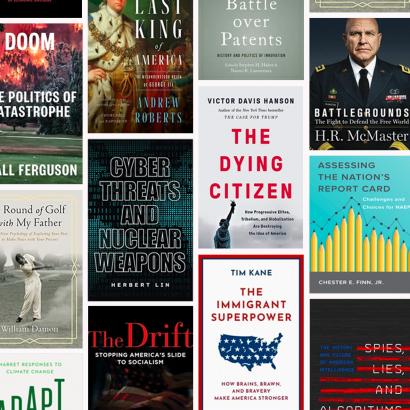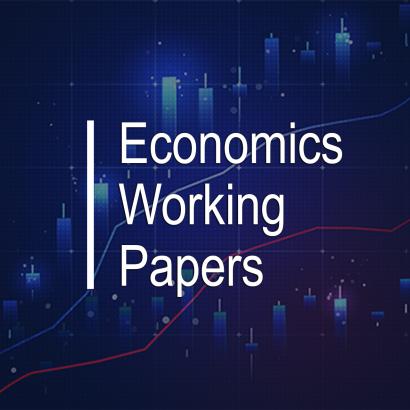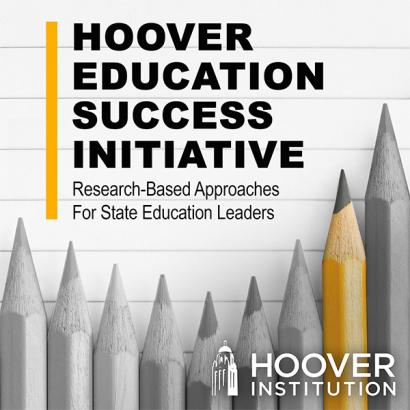Today, Niall Ferguson explains how drones are rapidly changing warfare; economist Arthur Laffer joins Jon Hartley for a discussion of tax policy and the 50-year history of his “Laffer curve” concept; and Condoleezza Rice speaks with US Secretary of Education Linda McMahon about the 2025 edition of the authoritative “Education at a Glance” report.
Security and Defense
Previewing at his Substack a recent column for The Free Press, Senior Fellow Niall Ferguson shares key insights into the future of armed conflict from his recent trip to Ukraine. “The war of the future is already here—and you are not sufficiently scared of it,” warns Ferguson. Extrapolating from trends already present on the battlefields of eastern Ukraine, the historian argues that for today’s war planners, “the goal is vast AI-enabled swarms of drones with edge computing. We are getting there fast.” Ferguson emphasizes in this piece that few have fully grasped the implications of drone-centric warfare for great power military preparedness going forward. Focusing on European sluggishness to adapt, Ferguson writes, “The people of Poland, Romania, Estonia, and (perhaps) Denmark all now know that Russian drones are capable of entering their airspace. But have they truly grasped what that implies?” Read more here.
Answering Challenges to Advanced Economies
For the latest episode of Capitalism and Freedom in the 21st Century, host and Policy Fellow Jon Hartley speaks with renowned economist Arthur Laffer. Laffer is most well-known for proposing the “Laffer curve,” a graphical relationship between tax rates and corresponding levels of total tax revenue. Laffer is also the founder and chairman of Laffer Associates, an economic research and consulting firm. Dr. Laffer’s economic acumen and influence in triggering a worldwide tax-cutting movement in the 1980s have earned him the distinction in many publications as “The Father of Supply-Side Economics.” On the show, Hartley asks Laffer about his origins as an economist and his relationships with the late Hoover Fellows George P. Shultz and Milton Friedman; the 50-year history of the Laffer Curve; the shape of the Laffer Curve; the effects of the 2017 Tax Cuts and Jobs Act on fixed investment and revenue; and much more. Watch or listen here.
Reforming K–12 Education
The Hoover Institution was proud to host the US launch of the 2025 Organization for Economic Co-operation and Development (OECD) “Education at a Glance” report. “Education at a Glance” is the authoritative source for information on the state of education around the world. It provides data on the structure, finances, and performance of education systems across OECD countries and a number of accession and partner countries. More than one hundred charts and tables in this year’s report—as well as links to much more available on the educational database—provide key information on the output of educational institutions; the impact of learning across countries; access, participation, and progression in education; the financial resources invested in education; and teachers, the learning environment, and the organization of schools. In opening remarks, Hoover Institution Director Condoleezza Rice spoke with US Secretary of Education Linda McMahon about the role of “Education at a Glance” in assessing educational outcomes. Watch or read more here.
In an op-ed column for The74, Hoover Fellow Michael T. Hartney explores the public’s response to teachers’ unions engaging in political advocacy for non-educational progressive causes. Hartney explains his own research into public support for teacher strikes over a variety of hypothetical issues, educational and not. “The results showed a striking partisan split,” he writes. “Respondents who identified as Democrats were overwhelmingly supportive of both types of strike campaigns, with more than seven in ten backing teachers.” But self-identified Republicans “drew a sharp distinction: Nearly four in ten said they would support a strike in their community for higher teacher pay, but . . . fewer than one in five respondents approved of the hypothetical strike [over general progressive causes] in their community.” The risk in teachers’ unions taking an increasingly broad political approach, says Hartney, is that they could become “ever more isolated and partisan—stronger in blue enclaves, weaker outside them.” Read more here.
Revitalizing History
Breakneck: China’s Quest to Engineer the Future, by Hoover History Lab Research Fellow Dan Wang, has advanced to the shortlist of six finalists for the prestigious 2025 Financial Times and Schroders Business Book of the Year Award. Wang’s book outlines core differences between the US, a “lawyerly state” where the law often blocks ambitious physical projects, and its arch-rival China, an “engineering state” that empowers infrastructure innovation and industrial ambition. Wang was previously a fellow at the Yale Law School’s Paul Tsai China Center and a lecturer at Yale University’s MacMillan Center for International and Area Studies. From 2017 to 2023, he worked in China as the technology analyst at Gavekal Dragonomics, based in Hong Kong, Beijing, and then Shanghai. Wang has discussed Breakneck extensively in podcasts and essays for various prominent media outlets; you can view these episodes and articles by clicking the link on his name above. Read more here.










Related Commentary